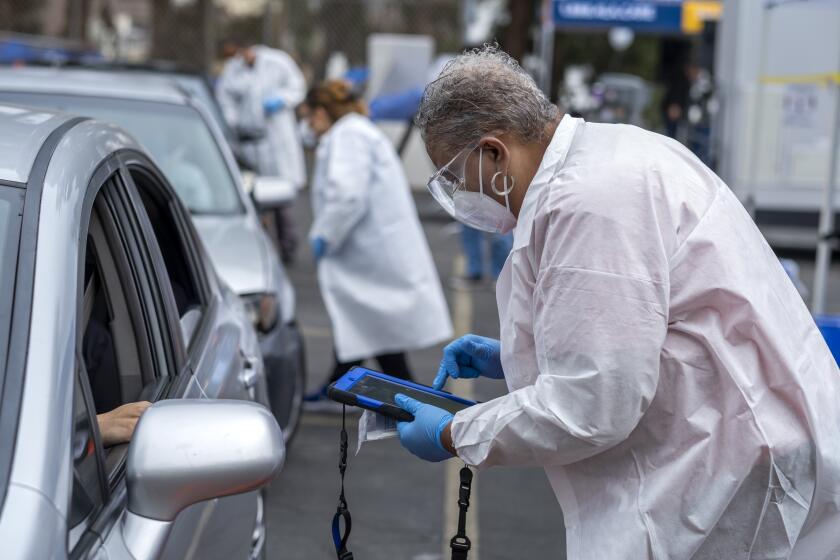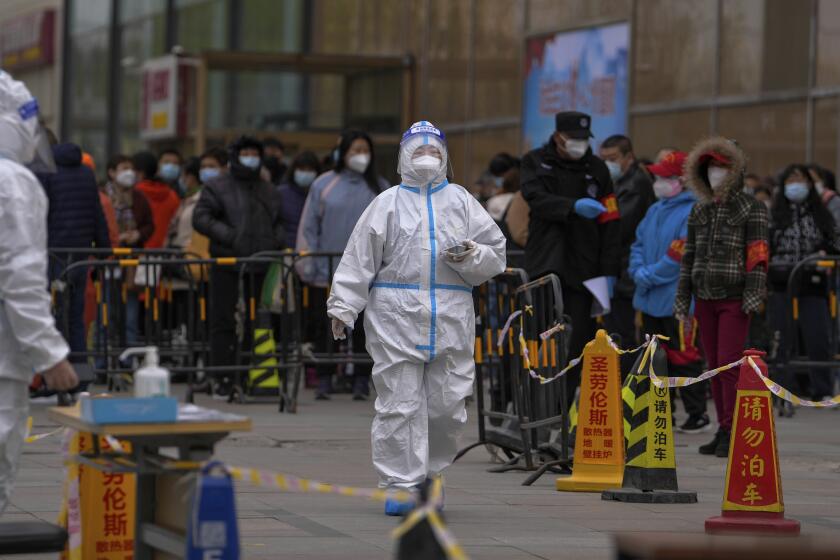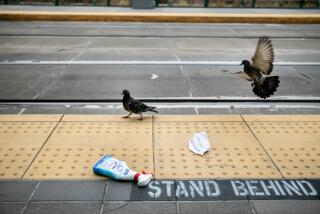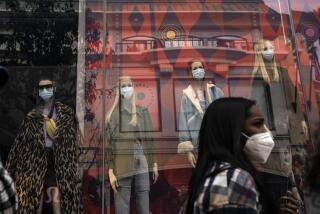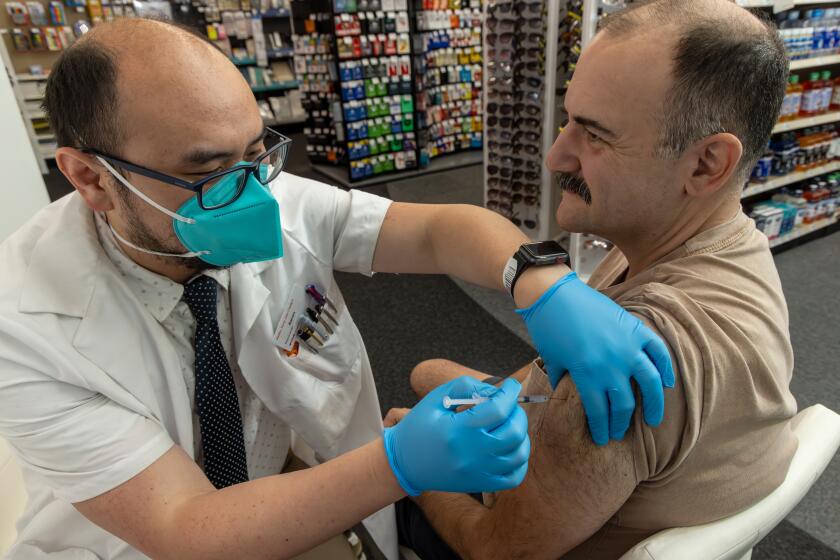Back to normal? For this family, the COVID-19 threat hasn’t gone away
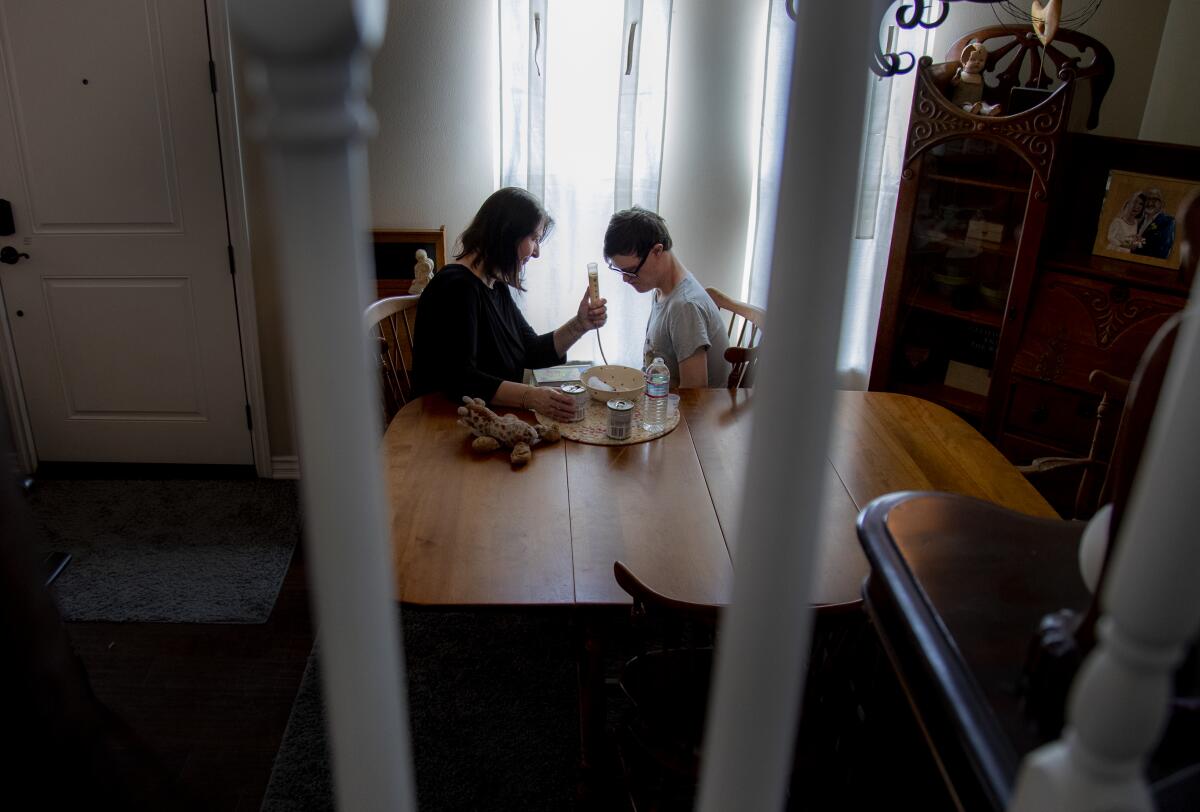
- Share via
For Kaia Brooke, little has changed this spring, even as others declare that California and the country are finally getting back to normal.
She has not gone out to dine inside a restaurant or sat down in a movie theater. She avoids going out much, save for outdoor walks and drives, and is still wearing her KN95 mask when she ventures out of her Monrovia home.
“We can’t move on like everyone else has been doing,” said the 24-year-old autistic woman, who has chronic illnesses, including a metabolic disorder that requires iron infusions. Her eyes, over the top of her maroon mask, are the color of the sea.
At times, she said, “it’s hard to shake the feeling of our lives feeling disposable.”
As government agencies have loosened pandemic protections, advocates for immunocompromised and disabled people have raised concerns. “We’re doing all the things that don’t protect people with disabilities,” said Bethany Lilly, senior director of income policy at the Arc, which advocates for people with intellectual and developmental disabilities.
Mask mandates have been rolled back, but crucial medications to prevent COVID-19 in immunocompromised people can still be hard to get. Federal money for testing and treating uninsured people has been drying up, just as a coronavirus subvariant that has driven spikes in Europe is on the rise.
Early estimates as noted by the World Health Organization say XE may be 10% more transmissible than BA.2.
Health officials have started focusing more heavily on hospitalizations than COVID-19 cases to gauge risk levels in communities — a measure that focuses more on strain to the health system, but fails to reassure immunocompromised people who face danger from high levels of coronavirus transmission. And although the White House recently announced a new push to clean indoor air, some critics say the government should have acted much sooner to ensure public spaces are safe.
“If we actually cared about chronically ill, disabled and immunocompromised Americans — including children — every state in the country would be doing proactive wastewater monitoring,” said Matthew Cortland, senior fellow on healthcare and disability at Data for Progress, a progressive think tank. As for air purifiers, “they should be so plentiful, we should be tripping over them.”
For Emily Brooke Holth, the situation has been “maddening.”
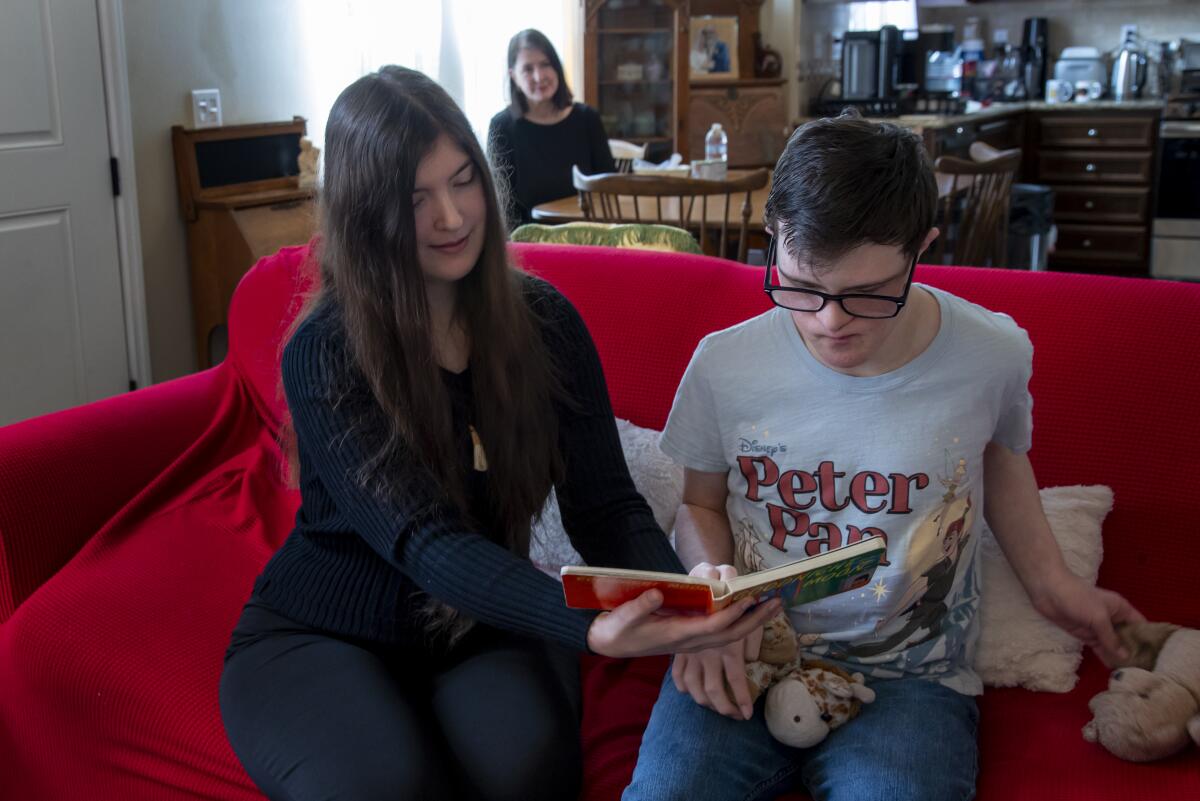
Holth is mother to Kaia and her twin brother, Ry Brooke, who is also disabled and immunocompromised. Ry, who speaks a few words and phrases, is autistic, has Down syndrome and uses a feeding tube. As their caregiver, Holth is constantly assessing risks when she heads outside. If the Trader Joe’s looks too full, she turns away to find another store or pays for grocery delivery.
As masking and other measures have been dropped, “it puts the burden on the individual,” Holth said.
Most of the pandemic has passed the same way for the family. Kaia rests in bed, reads, plays video games and messages friends. When she feels up to it, they go for a drive or head for a walk. Their mother feeds Ry every three hours through his tube, helps him bathe, and makes phone calls to schedule appointments for both twins with a gaggle of specialists.
Most of the time, they saw friends only through the glass door of their townhouse, waving to them from inside as they spoke on the phone. During surges, they would sometimes go on walks at a nearby cemetery. Holtz remembers her unease and then dawning anguish when it suddenly became crowded that first winter, as mourners gathered around a rash of new graves.
After they had all gotten vaccinated, the family had been tiptoeing back into the world. Holth got married last June and invited seven vaccinated people into their home to celebrate, sharing hugs and wedding cake at their Monrovia townhouse. She had begun to plan for Ry to return to a day program for people with developmental disabilities.
Instead, the Delta variant began to drive up cases, and they retreated. When the Omicron wave arrived this winter, “we went back to the strictest stay-at-home, as if it were the beginning of the pandemic,” Holth said. “We were like that for two and a half months.”
As that wave receded, they were beginning to think about venturing out again. Maybe a masked trip to a museum, Holth thought, eyeing the Hayao Miyazaki exhibit at the Academy Museum of Motion Pictures. She was grateful that Los Angeles County had been stricter than other parts of California when it came to masking and other pandemic rules.
But when those rules were stripped away, she decided against it. It has felt like “we’re a little raft off in the middle of the ocean.”
“I would love to take him to Disneyland,” Holth said of Ry, who she remembers being delighted on the “Alice in Wonderland” ride. His room features a framed photo of him and his family plunging on the Splash Mountain ride.
“I don’t think it’s going to be anytime soon,” Holth said wistfully.
“We talk to all of their specialists ... and they’re like, ‘Don’t go. It’s not safe.’ ”
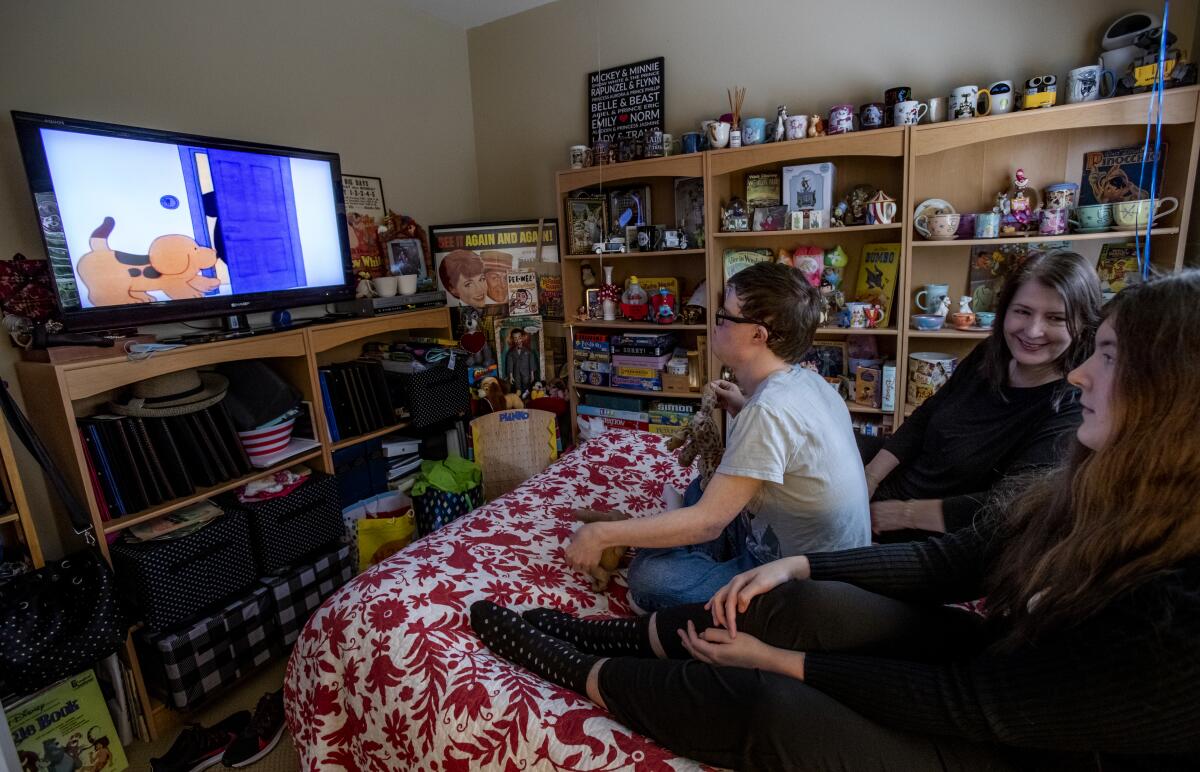
The latest phase of the pandemic comes on the heels of a pair of grueling years for disabled and immunocompromised people.
Disabled advocates say that the threat has not only been the virus, but the biases of the health system itself. Early in the pandemic, they complained that guidelines put forward by many states on how to allocate scarce resources such as ventilators were discriminatory against people with disabilities.
In January, the head of the Centers for Disease Control and Prevention outraged disability groups by publicly declaring that it was “encouraging” that a study had found that the bulk of vaccinated people who died of COVID-19 had at least four co-morbidities, calling them “unwell to begin with.”
Dozens of groups reacted with a letter complaining that “the public health response to COVID-19 has treated people with disabilities as disposable.” The CDC chief apologized, calling her remarks hurtful but unintentional. Months later, she angered many disabled activists again by likening masks to a “scarlet letter” that was annoying and inconvenient.
“Saying the quiet part out loud is what has happened with the pandemic,” said Christine Mitchell, a public health researcher and advocate with the Public Health Justice Collective in the Bay Area. Mitchell herself has a connective tissue disorder.
“I get it. People are tired. People are annoyed. People don’t want to wear masks,” Mitchell said. “But my life — and the lives of disabled people and immunocompromised people and all the people who are at high risk — is worth more than someone’s convenience.”
The global coronavirus caseload dips for a second consecutive week, but the WHO reports a new subvariant that combines the BA.1 and BA.2 Omicron strains.
Few expect broad mandates to return, short of a massive surge in hospitalizations.
Dr. William Schaffner, medical director of the National Foundation for Infectious Diseases, said that the practical reality now for immunocompromised people is that “all of those folks are going to have to look to themselves” for protection by masking, gauging the risk of events and activities, and staying up to date on vaccines.
Mask mandates have become a nonstarter, he said, so “the initiative will have to remain with the individuals who are affected and those closest around them. Society has moved on.”
Matan Koch, vice president for workforce and faith programs at the nonprofit RespectAbility, said that easing pandemic restrictions “doesn’t mean that we all need to go back to, ‘Screw it, you’re all on your own.’ ”
His hope is that governments and employers will take steps to protect and include vulnerable people, including guaranteeing paid leave so that sick workers do not come in to infect others, retaining the flexibility of remote work, and streaming live events.
During the pandemic, “all of a sudden the impossible was possible,” Koch said. “I really hope the artificial limitations will go away.”
Holth, sitting with Ry and Kaia outside their home in Monrovia on a sunny weekday, wanted to make clear that they do not feel sorry for themselves. Their life lived at home is a good one, filled with music and videos and Christmas decorations that stay up long after Christmas because Ry loves the holiday so dearly.
But if people really want to protect the immunocompromised, “acknowledging us would be a good start,” Kaia said.
More to Read
Sign up for Essential California
The most important California stories and recommendations in your inbox every morning.
You may occasionally receive promotional content from the Los Angeles Times.
